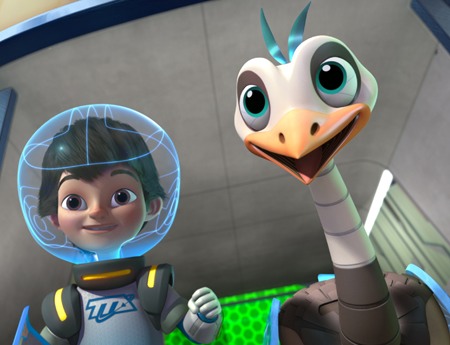Practicing Future Prep

It is one of the classic movie plot lines: The longtime manager, used to doing things the old way, takes on the young upstart who has tons of vital ideas. However, in the TV industry’s main professional organizations, which have long played a major role in training its members in new tech, the ending promises to be a happy one, as everyone looks toward the common goal of a speedier pace of innovation.
“We have an aging infrastructure that is being updated but we also have an aging workforce that needs to be kept current with major changes in the business,” said Mark L. Dzuban, president and CEO of the Society of Cable Telecommunications Engineers. “When you look at the competitive marketplace, training is becoming a much greater part of the industry’s effort to sustain its position.”
That imperative is prompting major changes in operations and training. “[2015] will be a transformative year for us,” Dzuban said.
The SCTE is not alone. The Society of Broadcast Engineers (SBE), the Society of Motion Picture and Television Engineers (SMPTE) and the International Association of Broadcast Manufacturers (IABM) have expanded their educational programs while the National Association of Broadcasters offers a number of programs through its NAB Education Foundation. Those include the Technology Apprenticeship Program, which provides participants with an apprenticeship at a radio or TV station and a week-long stint at a broadcast technology provider.
Companies and organizations are also stepping up their efforts to diversify the workforce. “We have a group of senior people that are soon going to be exiting the business through retirement and we need to get new blood into the business and to get people excited about working in broadcast,” said Joe Snelson, VP of engineering at the Local Media Group of Meredith Corporation and president of the SBE, which has added a mentoring program to its extensive training and certification efforts.
Daisy Auger-Dominguez, VP of talent acquisition and organization and workforce diversity at the Disney/ABC Television Group, stressed that the key to those diversity efforts is casting a wide net and finding new ways to connect with potential recruits. Disney/ABC not only works through a host of organizations and universities, they also get staff involved in networking efforts at their former schools and communities and are increasingly reaching out to younger kids to promote science, technology, engineering and math, or STEM education subjects.
“We are now thinking about consumer products and shows that would get kids excited about STEM careers,” Auger- Dominguez said. She cited the Disney Junior series Miles From Tomorrowland, which provides positive role models for girls entering computer science, and relies on female software engineers at Google as consultants.
Broadcasting & Cable Newsletter
The smarter way to stay on top of broadcasting and cable industry. Sign up below
John Honeycutt, CTO of Discovery Communications, added that their educational division has been extremely active in STEM efforts. But he also stressed the great resources they have in their existing broadcast engineers, and the importance of better cross-fertilization between younger and older staff.
“You have a long tradition of massive innovation in the traditional TV business,” he said. “If I could take the rock ‘n’ roll mindset of traditional TV people and combine it with the discipline of traditional IT, you would have an amazing organization.”
Communicating that tradition of innovation will also be important in attracting new talent. “When we show people what we’re doing to reinvent TV, you can get people very interested in the industry,” said Vince Roberts, executive VP of global operations and CTO of the Disney/ABC Television Group.
Others cite similar experiences. CableLabs CEO Phil McKinney notes that his company has successfully competed against top technology giants in Silicon Valley to recruit talent by emphasizing their innovative work in areas such as high-speed broadband networks. The R&D organization has also been establishing closer ties to universities by funding research and bringing in graduate students as interns. Some of that talent has later assumed tech posts at MSOs to help implement the technologies, McKinney said.
